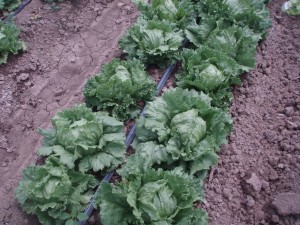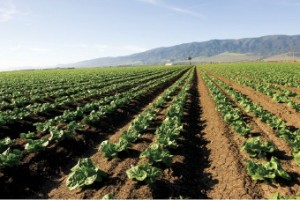July is Smart Irrigation Month
 Although we should be mindful of our water use every month, July is the official “Smart Irrigation Month” because it is a peak month for outdoor water use. An initiative of the Irrigation Association (a non-profit industry organization dedicated to promoting efficient irrigation), Smart Irrigation Month is a public awareness campaign that seeks to promote effective practices and innovative technologies to:
Although we should be mindful of our water use every month, July is the official “Smart Irrigation Month” because it is a peak month for outdoor water use. An initiative of the Irrigation Association (a non-profit industry organization dedicated to promoting efficient irrigation), Smart Irrigation Month is a public awareness campaign that seeks to promote effective practices and innovative technologies to:
- Increase crop yield per acre
- Apply water and nutrient inputs more precisely for improved results with no waste
- Minimize runoff and top soil erosion
- Help protect and preserve water supplies for today and the future Continue reading
 Sustainability is becoming a growing concern for individuals and big companies, alike. General Mills is just one example of a big company that has realized they have both a responsibility to promote efficient agricultural practices and an opportunity to maximize efficiency and productivity.
Sustainability is becoming a growing concern for individuals and big companies, alike. General Mills is just one example of a big company that has realized they have both a responsibility to promote efficient agricultural practices and an opportunity to maximize efficiency and productivity. Recently, American Vegetable Grower (AVG) magazine sat down with Inge Bisconer, Toro Micro-Irrigation’s technical marketing and sales manager, and discussed the
Recently, American Vegetable Grower (AVG) magazine sat down with Inge Bisconer, Toro Micro-Irrigation’s technical marketing and sales manager, and discussed the  On Thursday, May 9, 2013 at 1PM (Pacific Time), the Grange Network will be hosting a 60-minute, FREE webinar to discuss how water quality – both chemical and physical aspects – affect design, equipment selection, operation, and maintenance of drip irrigation systems. If not managed properly, poor water quality can severely impact the uniformity and overall performance of drip irrigation systems, resulting in decreased crop yield and higher water, energy, and fertilizer costs. So don’t miss this opportunity to learn about the importance of water quality and how to get the most out of your drip irrigation system.
On Thursday, May 9, 2013 at 1PM (Pacific Time), the Grange Network will be hosting a 60-minute, FREE webinar to discuss how water quality – both chemical and physical aspects – affect design, equipment selection, operation, and maintenance of drip irrigation systems. If not managed properly, poor water quality can severely impact the uniformity and overall performance of drip irrigation systems, resulting in decreased crop yield and higher water, energy, and fertilizer costs. So don’t miss this opportunity to learn about the importance of water quality and how to get the most out of your drip irrigation system. Charged with the issue of seawater intrusion, the Salinas Valley in California has done several things to all but eliminate the issue. First, two reservoirs were constructed to recharge the underground aquifer. Then, a wastewater treatment plant was built to enable the use of recycled water for irrigation. And recently, a rubber dam was installed to divert surface water for irrigation. Along with these attempts to improve the region’s water supply, Salinas Valley farmers have turned to drip irrigation and conservation to help solve their water issues.
Charged with the issue of seawater intrusion, the Salinas Valley in California has done several things to all but eliminate the issue. First, two reservoirs were constructed to recharge the underground aquifer. Then, a wastewater treatment plant was built to enable the use of recycled water for irrigation. And recently, a rubber dam was installed to divert surface water for irrigation. Along with these attempts to improve the region’s water supply, Salinas Valley farmers have turned to drip irrigation and conservation to help solve their water issues. This week, Toro announced a new emitter flow rate for its popular BlueLine® PC dripline, the 0.26 GPH pressure-compensating (PC) emitter. This new 0.26 GPH pressure-compensating emitter is the latest addition to Toro’s other BlueLine PC flow rates (0.42, 0.53, and 1.00 GPH).
This week, Toro announced a new emitter flow rate for its popular BlueLine® PC dripline, the 0.26 GPH pressure-compensating (PC) emitter. This new 0.26 GPH pressure-compensating emitter is the latest addition to Toro’s other BlueLine PC flow rates (0.42, 0.53, and 1.00 GPH).